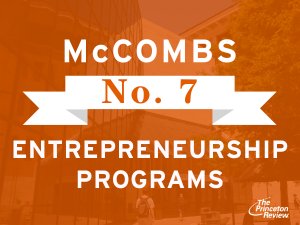The following post is written by Garrett Eastham, Co-Founder of Edgecase and Chief Data Scientist.
When I left my full-time job as a product manager at one of Austin’s fastest growing companies to pursue my life dream of building a successful enterprise marketing technology company, I knew next to nothing about how to go about doing such a thing. I had about twenty grand to my name and a personal runway of less than 10 months to figure it out. In less than a year, I had raised $3.5 million in venture backing, built a team of seasoned ecommerce executives, and signed on our company’s first IR100 client. None of it would have been possible if I hadn’t spent most of that year developing a winning advisory board.
As a new entrepreneur (especially if it is your first venture), the single highest leverage task you can perform with your time is identifying, pitching, and developing key advisors. An advisory board serves several purposes, however, all too often entrepreneurs treat them as names on slides and people to hit up for investor contacts when it’s time to fundraise. The best advisory boards – ones that are carefully crafted and honed – will function as an extension of your executive team (and if done correctly, one you probably could never afford at market rates).
A winning advisory board will serve multiple purposes. They will help you evolve both your business idea and your business model in ways you would have never imagined. They will introduce you to your first cohort of potential customers (who will close at a statistically above average rate). And they will help connect you to that rockstar engineer who otherwise wouldn’t even respond to your tweets. But for this to be possible you must build your advisory board wisely.
Step 1: Seek the right mix of advisors for your problem domain
One of the most common mistakes I see young entrepreneurs make is naively asking the first notable entrepreneurs who take their coffee meeting to join their advisory board. While these folks will most certainly be flattered, the best ones will advise that you first consider the particular skillset and make-up that you want at your table.
Above all, let your problem domain dictate the requirements for your advisory board. All lasting businesses solve real, tangible problems for customers, and much of what you accomplish from building a business comes from learning how to adjust to the needs of a particular market’s response to how you solve these problems. Once you identify the core problems you want to (someday) solve, focus on building a mix of types of advisors.
- Industry Leaders / Veterans (Ideally Entrepreneurs): Some of your best advisors will be existing successful entrepreneurs within your target industry. At Edgecase, I have had the immense fortune of working with many of the early Bazaarvoice executives – including Brett Hurt, Sam Decker, Michael Osborne, and several others. As a young entrepreneur attempting to build a SaaS company selling to the enterprise ecommerce market, I could not have asked for a better set of minds to debate ideas with and learn the inside secrets from. If you’re concerned about whether a seasoned entrepreneur will take your call, just remember – aside from being boldly persistent – these types of people are typically personally invigorated to meet impassioned entrepreneurs as it can often remind them of their own personal experience in starting their businesses.
- Technical Experts: Depending on your problem domain, it will likely be necessary to seek particular expertise when building your product or offering. As a business trying to solve a particular market problem, you will need to bring some new insight or IP that does not exist; therefore, you can get significant leverage by seeking out key product managers, designers, developers, or data scientists. You will likely not be able to afford them at the start (or possibly ever) and therefore, landing these types of people can help bring your product into a different competitive landscape. Great examples of this type of leverage are notable scientific advisory boards – like the one that has been built at Helix – where the difference between solving a market problem and successfully selling that solution depends on your ability to convince the market that you are technically capable of pulling it off.
- Customers (Existing & Potential): Every business founder will engage with customers at some point – ideally every chance they get if they’re doing their job correctly. Adding customers to an advisory board is a great way to get honest feedback that might be held back otherwise in the traditional customer relationship. For those selling into the modern enterprise, it’s great to have high-profile potential customers on your side (such as a key executive for the top brand in in your industry); however, do not think that doing so guarantees that company as a client. In fact, you will most likely not have the big fish customers on board early on – it’s often just too risky for a large enterprise to trust their assets with an unproven enterprise, no matter how strong the executive champion. Don’t worry though, you’ll spend plenty of time courting and closing those big fish while trying to move from Series A to B.
- Market Thought Leaders: Many entrepreneurs get so focused on customers or product development that they forget there are often extra-market factors that reside outside of that otherwise important interaction. Every industry – whether consumer, small business, or enterprise – has market thought leaders that its constituents respect: analysts, famous bloggers, celebrity Instagrammers, etc. While having these individuals on your advisory board does not guarantee you a place in the next Gartner Magic Quandrant, it can go a long way in showing providing an important 3rd party voice in customer / product interactions.
- (Possibly) Investors: While it might seem like a straightforward benefit to have folks that could write you a check when the times comes on your advisory board, keep in mind that these individuals are already strapped for time running from one board meeting to another. Also, most investors are spread across different product categories and industries (typically because they invest in patterns of business models versus specific markets); therefore, their impact will not be as significant when you are in the formation phases of determining just how to win at a given market (read – finding product market fit). On the other hand, if part of your problem domain is to figure out how to apply a new business model to a legacy market problem (think Uber / Lyft on consumer transportation), it can be invaluable to find an investor that has a particular passion around certain kind of new / emerging business models – like on-demand, SaaS, PaaS, etc.
(Stay tuned next week for Building a Winning Advisory Board for Your Startup :Part 2)






 But not if John Joyoprayitno, MSTC ’13, has his way. The co-founder and chief operating officer of Austin-based Alafair Biosciences is working to commercialize a natural membrane that could minimize adhesions by acting as an “internal Band-Aid” on surgical wounds.
But not if John Joyoprayitno, MSTC ’13, has his way. The co-founder and chief operating officer of Austin-based Alafair Biosciences is working to commercialize a natural membrane that could minimize adhesions by acting as an “internal Band-Aid” on surgical wounds.